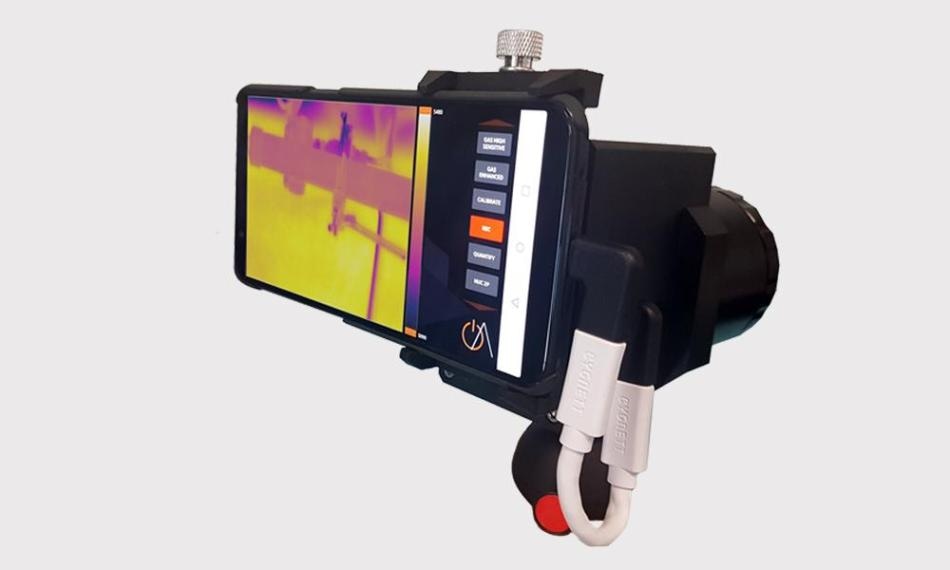Jun 1 2018
A system for detecting the emission of poisonous gases, which are hazardous and pollute the environment, has been developed by Sensia, a spin-off company in which Universidad Carlos III de Madrid (UC3M) has a share. This technology reduces the chances of leakage of gas in industry and could even be used in the home environment.
 Credit: Universidad Carlos III de Madrid
Credit: Universidad Carlos III de Madrid
Industries in which gas is transported or use are prone to the hazards of leakage, with the perils that this involves. “On the one hand, there may be issues as regards safety, because those gases can be toxic or poisonous; on the other hand, issues may arise at environmental level, given that other gases have a greenhouse effect far greater than that of CO2,” explained Francisco Cortés, the CEO of Sensia Solutions, who is also a researcher at UC3M’s Laboratory of Remote and Infrared Image Sensors.
For the detection of these leaks, Sensia has come up with a novel product that integrates two technologies (Sniffer and Optical Gas Imaging) linked through Bluetooth which traces and measures the amount of gas emitted.
To carry out an inspection in a facility, we record a video with our devices, which allows us to ascertain with precision whether a fugitive gas emission is occurring or not. If so, we then use other devices that allow us to measure the amount of gas that is leaking.
Francisco Cortés
In terms of this technology, Sensia has offered a solution to this difficulty at an affordable cost. Moreover, its application in operation and maintenance tasks could lead to a reduction in the carbon footprint stemming from gas leaks by nearly 70%.
The company states that the device is targeted for industrial use; however, it can be used in the home environment for monitoring potential leaks in vehicles powered by gas, or boilers, for instance.
The development of this product has been facilitated by Sensia’s connection to UC3M and its Science Park. This has allowed it to, “be at the cutting edge globally,” stated Cortés. “Thanks to all the research that has been conducted at the university over many years, ours is the only company in the world providing solutions related to the detection of fugitive emissions which are genuinely affordable,” he added.
Following two years of development with the help of European funds, this system has already hit the market. This is one of the most important achievements of Sensia’s GaSeS project and the outcome of the project’s first year in SME Instrument (reference number 756346), a Horizon 2020 call. Horizon 2020 is a European research program which supports companies in developing a project through all its stages, from the assessment and practicality of the concept to its commercialization and the application of its outcomes.